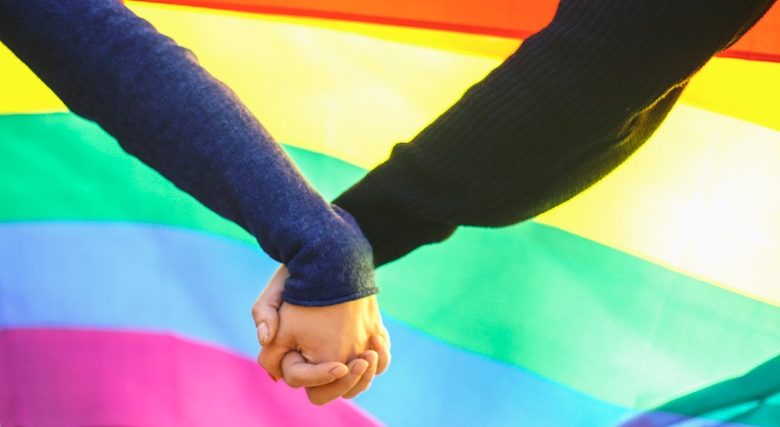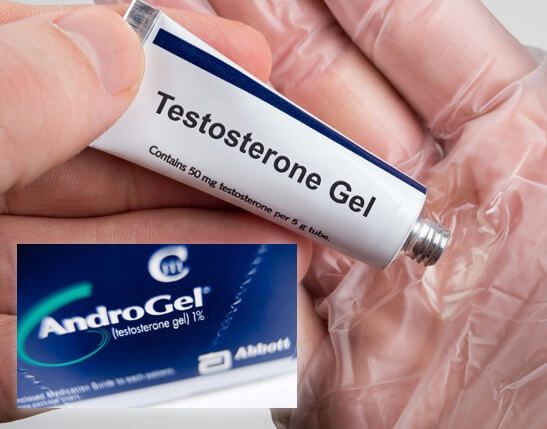
LGBTQ+
Members of the LGBTQ+ community have unique and complex health needs that heterosexuals don’t face. Health disparities and barriers to care can make staying healthy challenging, but knowing LGBTQ+ health risks can ensure you stay on top of your health. Local and national resources can help you prevent or treat these health conditions with the right medical testing, care and support.

Members of the LGBTQ+ community have unique health needs and risks that they have to be aware of to stay healthy. In addition to risks that affect all men and women regardless of gender identity or sexual orientation, such as heart disease and cancer, people in the LGBTQ+ community may face certain higher physical and mental health risks.
“Health equals self-care. Sometimes we can put our health on the back burner,” Joel Morales, Director of Operations at the LGBTQ+ Center in Orlando, told Drugwatch. “We should really focus on our health and self-care, because if we are taking care of ourselves then we can help others in the community. We have our chosen family that is depending on us to be there tomorrow.”
Unique Health Risks for LGBTQ+ People
- Greater risk of acquiring HIV and other sexually transmitted diseases
- Higher rates of substance abuse and smoking
- Higher risk of mental health issues such as depression and anxiety
- Greater risk of suicide attempts
- Higher risk of certain cancers
The community also faces higher rates of homelessness and sexual assault that can negatively affect health and wellbeing.
“We should really focus on our health and self-care, because if we are taking care of ourselves then we can help others in the community.”
Fear of discrimination and lack of health insurance coverage prevent many people in the community from seeking care. Finding a provider that understands the needs of the LGBTQ+ community can also be a frustrating and negative experience.
Fortunately, help is available.
Several local and national organizations can help members of the LGBTQ+ community begin a discussion with their provider or find providers who are allies. They may also provide free mental health counseling and STD tests.

Cisgender Gay and Bisexual Men
Cancer and heart disease are the leading causes of death in all cisgender men, according to the Centers for Disease Control and Prevention. But gay men and other cisgender men who have sex with men also have other unique health risks. The CDC defines the term men who have sex with men, or MSM, as a diverse group who have varying identities, behaviors and healthcare needs.
Some of the most pressing health issues facing the community are higher rates of STDs, tobacco and drug use, depression and body dysmorphia — a problem with body image, according to GLMA: Health Professionals Advancing LGBTQ Equality.
Quick Health Tips for Cisgender Gay and Bisexual Men
- Coming out to your provider will ensure you have the best care and receive all the testing you need to stay healthy. If your provider is not an ally, find another provider.
- Heart disease is a leading cause of death for all men. Get regular screenings for blood pressure, cholesterol and Type 2 diabetes.
- Cancer is a top cause of death for all men, but gay men may have increased risks. Get screened for prostate, testicular, colon, oral and anal cancers as recommended by your provider.
- MSM are at increased risk for HIV and other STDs. Know your status and get tested regularly to protect your health and the health of your partner.
- Practice safe sex to reduce your risk of acquiring or transmitting an STD.
- Ask your provider if PrEP/PEP can help you prevent HIV acquisition.
- Bisexual men are less likely to get tested for HIV and have elevated rates of HPV, which can lead to anal cancer. Make sure to get tested.
Gay and Bisexual Men Have a Higher HIV Risk
HIV and STDs remain some of the biggest health concerns in the gay community. The rates of HIV and other STDs among MSM are higher compared to those of heterosexual men.
Encouraging stats from the CDC show that after more than a decade of increases, the HIV infection rate has stabilized to about 26,000 new infections per year. But rates have risen among younger gay and bisexual men, African Americans and Latinos remain disproportionately affected.
“I wouldn’t call it an epidemic, but we have a rise in new HIV transmissions because we don’t have a lot of education out there,” Morales said.
Knowing your status is the first step towards prevention and treatment to control the virus. Approximately 1.1 million Americans are living with HIV, and 1 in 7 doesn’t know they have the virus, according to HIV.gov.
- 1 in 6 gay and bisexual men
- 1 in 2 African American gay and bisexual men
- 1 in 4 Latino gay and bisexual men
Some community members feel gay men’s casual attitudes towards sex and HIV or STD status could contribute to higher infection rates.
“While things like PrEP (pre-exposure prophylaxis) have lessened people’s fears about getting HIV/AIDS, it doesn’t prevent other STDs from being transmitted,” Christopher, a 39-year-old gay man from Orlando, told Drugwatch. “[Gay men] are not as concerned about unprotected sex now. If you get on the hookup apps and read the profiles, you have twenty-one-year-olds already HIV positive. That’s alarming.”
“[Gay men] are not as concerned about unprotected sex now. If you get on the hookup apps and read the profiles, you have twenty-one-year-olds already HIV positive. That’s alarming.”
Once someone acquires the infection, they may get flu-like symptoms that can last for up to two weeks. But many people may not have symptoms for years.
“One misconception about HIV is that you can tell early on. In reality, there are no signs or symptoms. The only way to find out is to get tested,” Morales said.
If left untreated, HIV can develop into AIDS. However, there are several treatments available to protect people from getting HIV, to control HIV and to reduce the likelihood of transmission by lowering the amount of virus in the blood. Antiretroviral treatment, or ART, drugs can lower the viral load to undetectable levels.
- Know your status and get tested. It usually takes about 15 minutes to get results.
- Receptive anal sex, or bottoming, is 18 times more risky for getting HIV than vaginal sex. If you are a top and positive, you are more likely to infect your partner. Always use condoms properly when having sex.
- If you are positive, stay on antiretroviral treatment to lower the chances of giving HIV to others.
- Talk to your doctor about pre-exposure prophylaxis (PrEP) to prevent getting HIV. Talk to your doctor within three days about post-exposure prophylaxis (PEP) if you have had a possible HIV exposure.
PrEP/PEP
Pre-exposure prophylaxis, or PrEP, and post exposure prophylaxis, or PEP, have helped keep more gay men safe from HIV. PrEP is a pill taken regularly that can reduce the risk of acquiring HIV in those who are HIV negative. PEP means taking anti-HIV medications within 72 hours after potential exposure to the virus to prevent becoming infected.
| What is it? | When is it taken? | What are the benefits? |
|---|---|---|
| PrEP is pre-exposure prophylaxis | People who are HIV negative take PrEP every day to prevent infection. | PrEP can reduce risk of getting HIV from sex by up to 99 percent if taken daily. |
| PEP is post-exposure prophylaxis | PEP is an emergency HIV prevention drug (anti-retroviral treatment) given within 72 hours of possible exposure to HIV. | PEP is not always effective. Start treatment as soon as possible to increase its effectiveness. |
Two pills are available for PrEP. These are commonly known by their brand names, Truvada and Descovy.
Truvada contains two drugs that work against HIV: emtricitabine and tenofovir disoproxil fumarate, also known as TDF or tenofovir DF.
Descovy contains a similar combination of drugs, tenofovir alafenamide, also known as TAF, and emtricitabine.
“You’ve got a lot of people who are on the apps like Grindr, and they’ll have their HIV status listed,” Joey, a 42-year-old gay man from Orlando told Drugwatch. “They’ll say, ‘treatment as prevention’ and they’re on PrEP. Those are two different things. Treatment as prevention means you are positive but undetectable, whereas if you are on PrEP, then you’re negative.”
These drugs can be expensive, but people without insurance can still get PrEP. The manufacturer of these drugs, Gilead, has special programs that can help people get PrEP for free. Local and national organizations, such as the ones listed at the end of this guide, may also help people get PrEP at no cost.
“Given the fact that [PrEP] is free, accessible and relatively safe, there is no excuse not to be on it,” Christopher said. “People don’t knowingly go around and try to infect people, but PrEP is a way to protect yourself and others.”
While PrEP has helped the community stay safe, it does have a few side effects. Common ones can include diarrhea, headache and nausea, while more serious ones include liver and kidney problems as well as decreases in bone density. Make sure to get regular kidney, liver and bone density tests if you are using PrEP.
Other STDs and Recommended Vaccinations
In addition to practicing safe sex or using PrEP/PEP, the CDC recommends tests and vaccinations to prevent other STDs and for general health. People infected with other STDs, such as gonorrhea, are at higher risk of getting HIV.
Get tested for the following STDs:
- HIV (at least once a year)
- Syphilis
- Hepatitis B
- Hepatitis C if you were born between 1945 and 1965
- Chlamydia and gonorrhea of the rectum if you have been a bottom in the past year
- Chlamydia and gonorrhea of the penis if you’ve been a top or received oral sex in the past year
- Gonorrhea of the throat if you’ve given oral sex in the past year
Recommended vaccinations include Hepatitis A and B, flu, coronavirus and human papillomavirus, or HPV. At-risk populations for monkeypox should speak to their doctor about vaccination.

Cisgender Lesbians and Bisexual Women
The leading cause of death for all cisgender women is heart disease. The CDC defines the term women who have sex with women, or WSW, as a diverse group with varied identities, behaviors, practices and risks. WSW must still have all the proper care to prevent cardiovascular disease, obesity, cancer and STDs.
Lesbians and bisexual women face a higher risk for breast cancer and gynecological cancers than heterosexual women. Lesbians and bisexual women are also at higher risk of substance abuse, smoking, heavy drinking and weight problems.
Quick Health Tips for Cisgender Lesbians and Bisexual Women
- Coming out to your provider will ensure you have the best care and receive all the testing you need to stay healthy. If your provider is not an ally, find another provider.
- Lesbians and bisexual women may be at increased risk for breast and gynecological cancers. Get the proper tests.
- Lesbians and bisexual women can get the same STDs as heterosexual women. Make sure to get STD tests regularly.
- Human papillomavirus is common among WSW, especially younger women. Screen for HPV and cervical cancer and ask about the HPV vaccine.
- If you smoke, take steps to quit.
- A healthy diet and fitness program are important because lesbians are more likely to be overweight or obese compared to heterosexual women. Get screenings for cholesterol, blood pressure and Type 2 diabetes.
- Bisexual women suffer increased rates of emotional stress, eating disorders and suicidality compared to lesbians and heterosexual women. Seek out mental health counseling or talk to your provider to get help.
- Hormone irregularity rates are higher in lesbians and so are rates of polycystic ovary syndrome. Ask about treatments for irregular periods or PCOS.
Reproductive Health
Though lesbians and other WSW may be less likely to become pregnant, they must still have regular screenings for STDs and Pap smears for cervical health. Data on STDs among WSW is less available, but this population is still at risk for STDs.
People can transmit HPV through skin-to-skin contact, and it is common in WSW. According to the CDC, 13 percent to 30 percent of WSW had HPV DNA on the cervix, vagina and vulva. Because HPV can lead to cervical cancer, it is important to get screened and tested. The HPV vaccine is recommended for younger women, and older women may also choose to get vaccinated.
Safe sex practices for women include using dental dams, gloves, and condoms on sex toys, and avoiding sharing sex toys.
Hormone Imbalances, Irregular Periods and Birth Control
Heavy periods or period irregularity are more common than people think. One out of every five American women is affected by heavy periods each year, according to the CDC. These issues can be caused by hormone irregularities and lesbians may be at higher risk for these hormone irregularities than heterosexual women.
One 2004 study published in Fertility and Sterility by Dr. Rina Agrawal and colleagues from London Women’s Health Clinic showed lesbians are more than twice as likely to have a hormonal imbalance.
Researchers found that 38 percent of the lesbians in the study suffered from polycystic ovary syndrome, or PCOS, compared to 14 percent of heterosexual women. PCOS can be caused by sex hormone imbalances or weight fluctuations, and may cause irregular periods and excessive hair growth or acne.
“I think the biggest issue I've had with being a cis woman identifying as a lesbian and being in a relationship with another cis woman is along the lines of reproductive health.”
Many providers prescribe birth control to treat heavy or irregular periods. Bisexual women may benefit from contraception to prevent unwanted pregnancy.
But women who exclusively have sex with women don’t need the benefits of contraception and many don’t want to be on birth control. Brittani, a 28-year-old lesbian from Kansas, is frustrated with treatment recommendations intended for heterosexual women.
“I think the biggest issue I’ve had with being a cis woman identifying as a lesbian and being in a relationship with another cis woman is along the lines of reproductive health,” Brittani told Drugwatch. “I have a lot of issues with period regularity, and the only recommendation I’ve ever gotten is to ‘get on birth control and that’ll help.’”
Some women like Brittani don’t respond to hormones to treat irregular periods, and hormonal birth control does carry some risks, such as blood clots or IUD perforation of the uterus. It’s important to bring these concerns to providers.
If you experience heavy or irregular periods and excessive hair growth or acne, make sure to get tested for PCOS.
Alternatives to hormonal birth control for heavy or irregular periods may include:
- Painkillers like ibuprofen and other non-steroidal anti-inflammatory drugs, or NSAIDs, can treat pain of cramps and may help lower blood loss, but side effects include stomach problems, nausea and headaches.
- Tranexamic acid affects blood clotting and may reduce bleeding. Side effects include headaches, tiredness and muscle cramps.
- Being overweight or underweight can cause fluctuations in hormones which can make periods irregular. If a woman is overweight, losing as little as 10 to 15 pounds can help make periods more regular.
- Surgery to thin the uterine lining may be used in some cases of heavy bleeding.
- Stress can cause irregular periods. Meditation and breathing exercises may help lower cortisol, which can affect estrogen and progesterone.
- Cyclic progesterone therapy may help regulate an irregular menstrual cycle without providing contraception.
Unique Cancer Risks
Lesbians and bisexual women may be at an increased risk for cancers of the breast and reproductive system, according to the American Cancer Society.
Breast Cancer
Breast cancer risk affects all cisgender women, but the risk is increased in women who have never breast-fed or had children. Women who have children later in life also face an increased risk. Other risk factors for breast cancer can include older age, family history, being overweight, drinking alcohol and not being physically active. Make sure to get mammograms. The American Cancer Society recommends getting a mammogram every year for women aged 45 to 54. After that, switch to one every two years.
Cervical Cancer
Cervical cancer most often occurs in women who are exposed to HPV. HPV transmission can occur in women who have had sex with a man or woman. Women who smoke or who have HIV are more likely to get cervical cancer. Other risk factors can include family history, being overweight, having a chlamydia infection and eating a diet low in fruits and vegetables. Make sure to get routine Pap tests to detect cervical cancer early, and talk to your health care provider to see if the HPV vaccine could help reduce your risk. Cervical cancer symptoms include unusual vaginal discharge, spotting or bleeding.
Endometrial Cancer
Endometrial cancer is a tumor that occurs in the lining of the uterus. Risks for this cancer include family history, obesity, diabetes, PCOS, never having used oral birth control and never having given birth. If you are at risk, make sure to ask about tests. Symptoms include unusual vaginal discharge, spotting or bleeding.
Ovarian Cancer
The risk of ovarian cancer increases with age. Women who are obese, women who have had certain cancers before, and women who have never been pregnant are at increased risk. Many women may use talcum powder for feminine hygiene. Some studies suggest that genital talcum powder use may increase the risk of certain reproductive cancers, most notably ovarian cancer. However, the link between talcum powder and ovarian cancer risk is still not clear. Talk to a health care provider if you experience symptoms such as vaginal bleeding or pelvic pressure.

Transgender People
Transgender people face several increased health risks and higher levels of stigma, discrimination and lack of access to quality care. Their needs are often more complicated than those of cisgender individuals. Finding a provider who is sensitive to the transgender community is key to better health.
“I would say the biggest health concerns for trans people are fear of rejection and discrimination,” Carsyn, a 24-year-old transgender woman from Indiana told Drugwatch. “But I actually have an amazing doctor who prescribes me my estradiol and spironolactone for my transition.”
The American Medical Student Association cites an increased risk of HIV infection, particularly among transgender women of color, and inadequate preventative cancer screenings in transgender men.
About half of transgender people also identify as bisexual or queer, according to the Human Rights Campaign. Bisexual individuals are far less likely to disclose their sexual orientation to their providers than cisgender gay men or cisgender lesbians.
Find out how to check what your insurance plan covers and your rights at the National Center for Transgender Equality.
Quick Health Tips for Transgender People
- Coming out to your health care provider will ensure you have better care and get proper screenings and tests. If your provider does not respect you as a transgender person, find someone who will.
- If your insurance doesn’t cover treatment, ask for a reduced rate so you can pay.
- Make sure you ask about all the side effects of hormone treatments and get proper tests to make sure they are at the correct levels. Only take hormones prescribed by your provider.
- Transgender people may be at increased risk for heart attack and stroke because of hormone treatments or other factors. Transgender women who take estrogen may develop heart trouble. Tell your provider if you develop chest pain or trouble breathing.
- If your sex organs have not been removed, you can still develop reproductive system cancers. Check with your provider for proper tests.
- Get tested for STDs regularly and practice safe sex.
- Transgender people have higher rates of depression. Talk to someone and get help if you feel you may harm yourself.
- Take a friend with you to medical appointments to help you feel safe.
Fear of Discrimination Prevents Transgender People from Seeking Health Care
One in five transgender individuals postponed or did not even try to get health care in 2014 because of fear of discrimination, according to Fenway Health.
Mateo Rojas — a 24-year-old, disabled Latino transgender man from Massachusetts — told Drugwatch he would get frequent urinary tract infections because going to public restrooms was so uncomfortable that he would hold it. At age 22, providers gave him the antibiotic Cipro for a UTI and side effects of the drug disabled him.
“I worry how they are going to treat me behind closed doors. If I’m in a medical crisis, will they save me?”
Now he sees several specialists and is in and out of doctor’s offices, and getting undressed is uncomfortable because he hasn’t had top surgery.
“Having people call me by my dead name and having all my legal papers still identify me as a female makes me feel unsafe when I go to providers. It makes it more difficult being disabled,” Rojas said. “I worry how they are going to treat me behind closed doors. If I’m in a medical crisis, will they save me? But I still advocate for myself.”
Even with fear and discrimination, there are still providers who are allies and work to support transgender people and keep them healthy. Don’t give up on finding one. Check out the end of this guide for tips on finding a provider.
Hormone Therapy Risks
Male to female, or MTF, and female to male, or FTM, transgender people with gender dysphoria require hormone therapy to transition. For FTMs, this involves using testosterone. The hormone comes in injections, topical creams or gels, implants or oral medications.

Side effects of testosterone therapy vary per person, but there have been reports of destabilizing effects on bipolar disorder, schizophrenia and mood, according to Fenway Health.
MTFs use some form of estrogen to transition. Estrogen comes in patches, pills and injectables. Some forms of the hormone can increase the risk of blood clots which can cause strokes. Anti-androgen drugs that block the effects of testosterone are also commonly used with estrogen. Oral progestin with estrogen was associated with an increased risk of cardiovascular disease, breast cancer, weight gain and negative mood changes in transgender women. Because of this, progestins are typically not recommended.
Make sure you talk to your provider about the risks of hormone therapy and have them monitor for any adverse reactions.
Cancer Screening
Transgender people can still get cancers of the reproductive organs if they have not been removed. Hormone treatments for transitioning may also increase certain cancer risks. For these reasons, it’s important to keep up with cancer screening.
Breast Cancer
Male to female and female to male transgender people have different risks for breast cancer. MTFs who never take hormones will have the same risks as cisgender men. But cases of breast cancer in MTFs who take estrogen or estrogen-progestin combinations have been reported. The risk goes up with the amount taken over a lifetime.
The FDA has warned that certain types of textured breast implants may increase cancer risk. So MTFs should talk to their health care providers about the risks of certain implants.
FTMs who do not take hormones or have surgery have the same risks as cisgender women. Removing breasts reduces but does not eliminate the risk because some breast tissue is left after surgery.
MTFs who are aged 50 and over and take hormones and FTM age 50 and over who have not had chest surgery should get an annual chest/breast screening, according to the Canadian Rainbow Health Coalition.
Cervical Cancer
Cervical cancer is associated with HPV, which is an STD. MTFs who have had surgical recreation of a cervix have a risk of cervical cancer. MTFs with risk factors such as genital warts or HIV should have annual Pap smears.
FTMs who have never had fingers, toys or a penis in their vagina have a low risk for HPV. But if they still have a cervix and are sexually active, they should get routine Pap smears.
Testosterone therapy may cause changes in the cervix that resemble early signs of cancer. Make sure you tell your doctor that you are taking testosterone. In these cases, an abnormal Pap doesn’t necessarily mean you have cancer. It’s just a side effect of testosterone. Your provider might recommend more tests.
FTMs who are uncomfortable with Paps might decide to have a hysterectomy.
Ovarian and Uterine Cancer
Only FTMs are at risk for ovarian and uterine cancer. Early detection and treatment greatly increases the chances of survival. Many FTMs are uncomfortable with pelvic exams needed to check for cancerous lesions. In these cases, providers may recommend removal of the ovaries, cervix and uterus.
Prostate Cancer
Prostate cancer risk increases with age, and only MTFs can get prostate cancer. Taking feminizing hormones causes shrinkage of the prostate and decreases cancer risk. But it can still happen.
A rectal exam, or a finger in the rectum, is generally the test to check for prostate cancer. A blood test to check for prostate-specific antigen, or PSA, can also detect the cancer.
MTFs should have their prostate checked once a year after age 50.
“Pumping Parties”
MTFs may attend events called “pumping parties.” At these events, people inject themselves with “silicone injections” given by unlicensed providers in order to feminize themselves more rapidly and help them blend in or “pass” as cisgender women.
Rates of pumping range from 20 to 50 percent of transgender women, according to The University of California, San Francisco.
Reasons why MTFs may engage in pumping include lack of knowledge about the dangers, lack of access to health insurance, peer pressure and poor self-image.
These dangerous injections may contain window caulk, tire sealant, aircraft lubricant, petroleum jelly and other toxic substances. Pumping can cause serious side effects including bleeding, pain, erosions, tissue death, organ failure, respiratory distress syndrome, or ARDS, and death.
If you have participated in a pumping party or injected yourself with silicone, seek help from a provider immediately.

LGBTQ+ Youth
LGBTQ+ youth face various challenges because of how others may respond to their sexual orientation or gender identity. They often face high rates of physical violence, rejection by families and peers and inadequate support systems.
This can impact their physical and mental health negatively. Studies have linked parental rejection to depression, drug use and risky sexual behavior, according to the CDC. Risky sex practices lead to higher levels of STDs.
Youth aged 13 to 24 made up 21 percent of new HIV diagnoses in the United States in 2017. Eighty-seven percent of those new cases were in young men.
At least 18 percent of lesbian, gay and bisexual students had experienced physical dating violence in the past, according to the Youth Risk Behavior Survey in 2015. This survey has historically included questions about lesbian, gay and bisexual youth, but has not gathered data regarding either transgender or questioning/queer youth. The CDC’s LGBT Youth page reflects this in their statistics.
In addition, lack of acceptance by family can lead to homelessness among LGBTQ+ youth. Suicide rates are also high.
Finding support and affirmation can help.
“I was twelve when the world started hating me for being bi,” Rojas said. “The most empowering thing is to be believed and validated. Find someone who believes you and can get you through the day. It might not be mom or dad or a teacher. It might be a friend. It might even be someone online.”
Local and national support groups online and through social media can help youth find resources and answer their questions. Organizations like The Trevor Project can help young LGBTQ+ people in crisis.

Mental Health and Suicide
LGBTQ+ adults and youth are more likely than their heterosexual peers to have mental health problems, and they are more at risk for substance use problems and suicide.
According to the Human Rights Campaign Foundation, stigma, discrimination and hostile laws that take away LGBTQ+ rights can drive up the rates of mental illness and suicide in the community.
But supportive, inclusive environments and a social network of friends, allies and chosen family can reduce these rates.
For example, according to the CDC, 60 percent of lesbian, gay, bisexual and queer youth reported feeling so sad or hopeless in 2015 that they stopped participating in their usual activities. Another study cited by HRCF showed that LGBQ youth are more than twice as likely to feel suicidal compared to their heterosexual peers.
But LGBTQ+ youth with affirming families had higher levels of self-esteem and overall health. Transgender youth with affirming families were as psychologically healthy as their cisgender peers.
The same is true for LGBTQ+ adults. Among lesbian, gay, bisexual and queer adults living with mental illness, 13 percent had mental illness that interfered with their lives as opposed to just four percent of heterosexual adults.
Forty percent of transgender Americans reported serious psychological distress in contrast to 5 percent of cisgender Americans in a National Center for Transgender Equality survey. Suicide attempts among transgender individuals are similarly elevated, with 40 percent of transgender individuals reporting a suicide attempt at some point during their lifetime (versus less than 5 percent of the general population).
Substance abuse and mental distress often go hand in hand. One in three lesbian, gay, bisexual and queer adults experienced mental illness, compared with one in five heterosexual adults, according to the Substance Abuse and Mental Health Services Administration’s National Survey on Drug Use and Health, or NSDUH. The same survey reported 15 percent of lesbian, gay, bisexual and queer adults abused drugs or alcohol compared to 8 percent of heterosexual adults.
Joel Morales of the LGBTQ+ Center in Orlando thinks historical traumas and the tendency to bury painful events contributes to poor mental health in the community. He witnessed it first-hand as a second responder during the 2016 Pulse nightclub shooting in Orlando.
“[The people I talked to] weren’t even focusing on what happened at the nightclub,” Morales said. “They had past traumas from their childhood that they didn’t deal with yet. If we don’t process these things they can manifest in different way five or ten years down the road.”
“If we don’t process these things they can manifest in different ways five or ten years down the road.”
The local community rallied around Pulse victims and their families, providing support and mental health resources.
If you feel hopeless or feel like hurting yourself, there is hope. Talk to someone.
Many cities have local resources and crisis centers available. National organizations are also available at all times of the day to talk and offer support.
Providing a fellow community member a shoulder to lean on, working for equality in your community and sharing your story can help break down mental health stigmas, according to the Human Rights Campaign.
- The Trevor Project for LGBTQ+ youth in crisis.
- Trained counselors are available 24/7 on the TrevorLifeline at 1-866-488-7386. The website also offers a chat and a text for help service. Text START to 678678 to start getting help.
- Trans Lifeline.
- Peer support hotline for trans people in crisis run by trans people at 1-877-565-8860. They’re available from 7am-1am PST / 9am-3am CST / 10am-4am EST. Volunteers may be available during off hours.
- National Suicide Prevention Hotline.
- 24-hour toll-free crisis line: 1-800-273-8255.
- Fenway Health (not suicide specific).
- LGBTQ+ people can speak to trained volunteers about HIV/AIDS, coming out, safer sex, depression, suicide, harassment and violence. They can help connect callers with LGBT groups and services in your local area. LGBT Helpline (25+) 888-340-4528. Monday to Saturday, 6pm - 11pm / Peer Listening Line (25 & Under) 800-399-PEER. Monday to Saturday 5pm – 10pm.
- Gay, Lesbian, Bisexual and Transgender National Hotline (not suicide specific).
- 1-888-843-4564 and email: help@GLBThotline.org. Hours (Pacific Time): Monday to Friday, 1:00pm - 9:00pm; Saturday, 9:00am - 2:00pm. Hours (Eastern Time): Monday - Friday, 4:00pm - Midnight; Saturday, Noon - 5:00pm. Peer one-on-one chat and email support. Support related to coming out, relationship concerns, bullying, workplace issues, HIV/AIDS anxiety, safer sex information or any other issues you are facing.

Cigarettes and Vaping
Members of the LGBTQ community show higher rates of cigarette and e-cigarette use compared to their heterosexual peers, according to the National Institute on Drug Abuse. Bisexual women and men in particular were more likely to vape compared to their heterosexual counterparts. They were also more likely to smoke and vape at the same time, which puts them at greater risk for health problems.
Tobacco products, including cigarettes and e-cigarettes such as Juul, are known to cause health problems and nicotine addiction.
In fact, more than 16 million people in the U.S. are living with a smoking-related disease, according to the CDC. Smoking causes stroke, heart disease, cancer, diabetes, lung disease, bronchitis and chronic obstructive pulmonary disease (COPD) among other problems.
The FDA has said that e-cigarettes may benefit adult smokers when used as a complete substitute for smoked tobacco products. But the agency hasn’t approved them to help people quit smoking, and they are not without risks.
E-liquid, also called vape juice, contains several toxic and potentially harmful substances such as cancer-causing chemicals, heavy metals, flavorings linked to a serious lung disease and nicotine. E-cigs have been linked to side effects such as seizures, heart problems, stroke and heart attacks.
Quitting smoking can reduce the risk of several diseases. Reach out to your health care provider if you want to quit. There are several support programs that can help for free. For example, smokefree.gov has several resources to help people in the LGBTQ community quit smoking or vaping.
Finding a Health Care Provider
Fear of discrimination and lack of insurance coverage prevents many people in the community from seeking care. Dealing with a provider that doesn’t understand LGBTQ+ needs can be frustrating.
“A big thing with me is their willingness to not just assume what you need, but instead working to work with you to find a solution, or connecting you with the resources you need to do so,” Brittani said. “I’d also recommend researching providers and, if possible, finding out their reviews when it comes to the LGBTQ+ community, because that can make a HUGE difference in how you’re treated overall.”
The best thing for a gay, lesbian, bisexual or transgender person to do is to come out to their health care provider. Being honest and open with health providers about sexual identity and health concerns will help ensure the best care.
“What I tell my clients is that we have to advocate for ourselves,” Morales said. “And it can be very difficult to ask the right questions. But sometimes, we have to educate ourselves to educate [providers], and that is a struggle that we have to go through.”
Tips for Coming Out to Your Provider
- Call the provider before going to the provider’s office and ask if they have LGBTQ+ patients. You don’t have to give your name if you don’t want to.
- Bring a friend to your appointment if you feel uncomfortable coming out on your own.
- Ask your provider if they have time to chat while you’re still fully clothed and comfortable.
- Learn specific issues that face your specific community and ask educated questions.
Source: Human Rights Campaign
In some cases, coming out to your provider might make you feel unsafe. That’s okay.
Fortunately, several resources can help members of the LGBTQ+ community find providers and help open a dialogue with them. If your provider does not respect your identity, don’t be afraid to find another provider if you can.
“I go into a new provider’s office and make them take me seriously,” Mateo Rojas said. “I don’t ask, ‘Is it okay if I go by Mateo?’ I say, ‘I go by Mateo and I am transitioning.’ If they automatically don’t respect that, then I find another one.”
Rojas adds that sometimes some people might not have the privilege of switching providers or having insurance. If you feel unsafe taking that approach, don’t do it alone. Find support and take a witness or friend with you.
Ask around in the LGBTQ+ community for referrals. Chances are a friend will have an answer.
“I don’t think I would feel comfortable asking a regular doctor about PrEP. So we actually found a gay doctor, though there aren’t many in the area,” Christopher said. “We found him through word of mouth because he doesn’t really advertise.”
If you don’t have insurance, ask if your doctor will work with you on a reduced payment or on a sliding scale. Your state or county might also have free clinics you can try.
- The Human Rights Campaign Healthcare Equality Index
- Search for providers that meet HRC’s criteria for equity and inclusion of LGBTQ+ patients, visitors and employees.
- GLMA Health Professionals Advancing LGBTQ Equality
- Look for a provider in your area.
- OutCare
- Find LGBTQ+ competent doctors and healthcare providers.
- Queer Health Access
- The Tegan and Sara Foundation fights for health, economic justice and representation for LGBTQ+ girls and women.
Calling this number connects you with a Drugwatch.com representative. We will direct you to one of our trusted legal partners for a free case review.
Drugwatch.com's trusted legal partners support the organization's mission to keep people safe from dangerous drugs and medical devices. For more information, visit our partners page.


